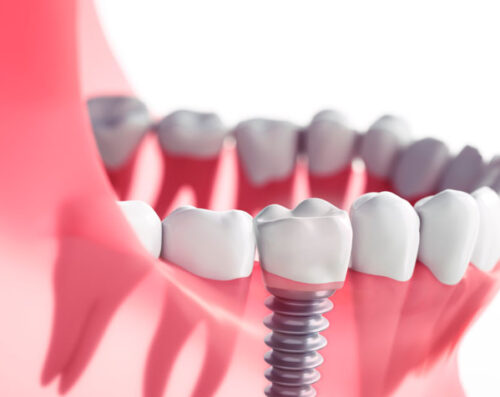Care After Dental Implant: Expert Tips For a Smooth Recovery
Basics of implants — strong, natural tooth restoration with a metal post.

Care after dental implant matters. This guide explains what to expect during recovery, how to care for the surgical site, and when to call your dentist. Most people heal without problems in a few weeks, though complete bone integration can take several months. Follow these simple steps to aim for a smooth, complication-free recovery and protect your new implant for the long term.
What to Expect in the First 24–48 Hours
Expect numbness from local anesthetic for a few hours, light bleeding, and swelling. Mild discomfort is normal and usually peaks within the first 48–72 hours. You may notice slight bruising or stiffness in your jaw. Rest, ice, and proper medication will control most symptoms. If you have an emotional or physical reaction to anesthesia or meds, contact your provider.
Essential care after dental implant: Day 1 to Week 1
Pain control and medications
Over-the-counter options like ibuprofen (Advil, Motrin) or acetaminophen (Tylenol) are commonly recommended unless your dentist prescribes otherwise. For stronger pain, a prescription opioid or combination medication may be given—use it only as directed and avoid driving or alcohol if taking it. A common technique is alternating ibuprofen and acetaminophen every three hours to keep pain low while staying within safe dose limits. Always follow dosing instructions and let your dentist know about allergies or other medicines you take.
Managing swelling and bruising
Apply an ice pack to the outside of your cheek for 20 minutes on, 20 minutes off during the first 48 hours. Swelling usually peaks around 48–72 hours and then slowly improves. Keep your head elevated while resting and sleep on extra pillows the first few nights. Warm compresses can help reduce bruising after 72 hours if swelling starts to go down.
Bleeding and clot care
Light bleeding or oozing is normal. Bite gently on gauze for 30–60 minutes to help a clot form. Avoid spitting, rinsing forcefully, or using straws for 48 hours—these actions can dislodge the clot. If bleeding is heavier than soaking through gauze every 30 minutes, apply firm pressure with a fresh gauze or a damp tea bag and call your dentist.
Eating and Drinking After Your Implant
Stick to a soft diet for the first week: yogurt, applesauce, mashed potatoes, soup (not too hot), smoothies (no straw), scrambled eggs, and well-cooked pasta. Avoid crunchy, sticky, or hard foods that can disturb the site. Stay hydrated but avoid alcohol and hot beverages for the first 48 hours. You can usually reintroduce firmer foods gradually after 2–3 weeks, depending on how you feel and your dentist’s advice.
Oral hygiene: How to clean around your implant
Good hygiene helps prevent infection. Brush gently near the implant with a soft-bristled brush—do not scrub the surgical site aggressively. Start rinsing with warm salt water (1/2 teaspoon salt in 8 ounces water) 24 hours after surgery, 2–3 times daily. If your dentist prescribes an antiseptic rinse like chlorhexidine, use it exactly as directed. Interdental brushes or floss can be used carefully once your dentist clears you, usually after the initial healing phase.
Activity, rest, and returning to normal life
Rest for the first 24–72 hours and avoid heavy lifting or vigorous exercise for about a week. Physical activities that raise blood pressure can increase bleeding or swelling. Most people return to non-strenuous work in a couple of days; if you had sedation or general anesthesia, plan for a longer recovery and arrange a ride home. Avoid smoking and vaping—they impair healing and increase the risk of implant failure.
Signs of complications: When to call your dentist
Call your dentist right away if you have any of these red flags: – Fever over 100.4°F (38°C) or chills – Severe pain that doesn’t improve with prescribed meds – Heavy bleeding that won’t stop after 30–60 minutes of pressure – Pus, foul taste, or swelling that worsens after 72 hours – The implant feels loose or moves These issues may require urgent attention—don’t wait more than a few hours for help if you see them.
Long-term care to protect your implant
After initial healing, maintain regular dental checkups and professional cleanings every 3–6 months in the first year, then as recommended. Use a night guard if you grind your teeth. Avoid chewing very hard foods (ice, hard candy, bones) and quit tobacco to lower the chance of implant failure. With good care, implants can last many years.
Common questions about care after dental implant
– How long does healing take? Initial healing is 1–2 weeks; full bone integration typically takes 3–6 months. – When is the crown placed? The crown is placed after your implant has integrated—usually several months—unless you had an immediate load procedure. – How long will numbness last? Numbness from anesthesia usually fades in hours; if it persists beyond 2 weeks, contact your dentist. – Can I fly after surgery? Short flights are usually fine, but expect slightly more swelling—avoid flying within 48–72 hours if possible. – Will insurance cover implants? Coverage varies. Many dental plans offer partial coverage; ask about financing or payment plans if needed.
Free Dental Implant Consultations
We offer free dental implant consultations to discuss your options and recovery plan. A consultation typically includes an exam, imaging if needed, a tailored treatment plan, and a clear cost estimate. If you’re considering implants or want personalized guidance about care after dental implant, schedule a consult to get answers and next steps. If you have concerns during recovery, contact your dental office—early action prevents most complications and helps you heal well.

